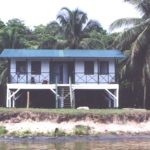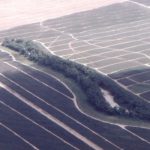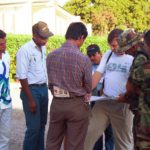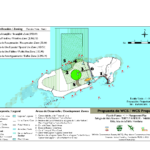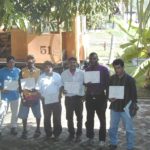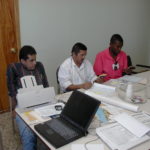
“Contents: nothing”
As we get ready to celebrate the close of our Leon Levy Foundation-funded Legacy Digital project, we can take this opportunity to reflect on the work we’ve done and most importantly, the content we’ve transferred from physical storage media dating back to the early 1980s. The contents found on these 1,000 storage media items were, contrary to the image above, a whole lot of something: an assortment of audiovisual documentation, research papers, scientific hard data, meeting minutes, conference proposals and presentations, among other nuggets of insight into WCS’s activities over the past thirty years.
Due to the nature of our project and the fact that we’re working with digital media items, a good part of our workflow is centered on key appraisal decisions. SAA (Society of American Archivists) defines the act of appraisal as a process for “determining whether records and other materials have permanent (archival) value.” These determinations take place prior to a donation, and after accessioning, in iterative steps that include establishing the integrity of materials and intellectual control as well as documenting preservation actions taken upon materials.
Integrating appraisal decisions to our workflow was challenging. This is because, as a project archivist hired to implement workflows for processing our digital content, I came to the project unfamiliar with many of the subjects and names represented on the disks. I had been operating under a MPLP (More Product, Less Process) mindset, favoring the establishment of a technical environment for the workflow over the content of the items I had been working on. It made the question of “what should be kept?” more pressing and pertinent. This opened up an ongoing conversation with Institutional Archivist Madeleine Thompson, whose breadth of knowledge informed decisions about what the WCS Library and Archives is able to collect at this point in time, when it is developing its digital preservation capabilities. These conversations bestowed upon me a greater appreciation for the content I was working with and its enduring value.
Those appraisal considerations unlatched parts of our workflow for refinement. Now, we start our digital processing workflow with a piece of physical carrier media and its corresponding drive, which is connected via a write-blocker to a modern computing system. The write-blocker enables a user to acquire data from digital storage media without altering the contents within the storage media. We make a bit-by-bit disk image of the storage media using the BitCurator environment, a bundle of free and open-source digital forensics tools and software.
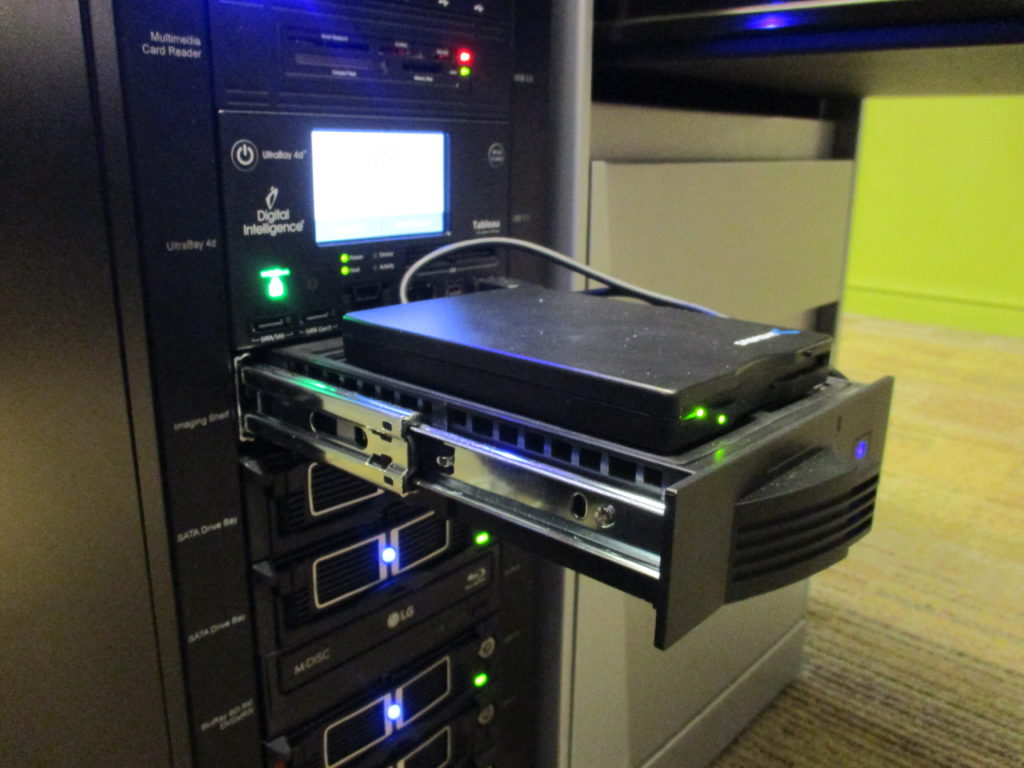
3.50″ floppy disk drive connected via write blocker to our forensic workstation.
File format identification, an understanding of an object’s identity and characteristics, is the starting point for any digital preservation action, one which includes the planning and migration of an obsolete file to a preservation friendly format. Making use of available file format identification tools and interpreting the results when dealing with huge amounts of file types was also a difficult step to define within our processing workflow.
After a disk image is created, we analyze its contents by characterizing (the act of identifying the technical characteristic of a digital object) the files contained within the disk image. In the case of HFS-formatted disks (an early Mac OS file system), we use HFSExplorer found on the BitCurator environment, to browse and extract Mac formatted disk images. During the process of developing our workflow, we started dabbling with Brunhilde, a graphical user interface reporting (GUI) tool developed by Tim Walsh, based on Richard Lehane’s Siegfried, which runs a signature-based file format identification tool on a directory or disk image. Siegfried uses the National Archives UK PRONOM file format signature, an online technical registry that supports digital preservation services, and freedesktop.org’s MIME-info file format signatures.
Recently, after re-evaluating our workflow, we have started using another stack of tools developed by Tim Walsh (at the Canadian Centre for Architecture), and we’ve been very pleased with the results. Intended to be used in a BitCurator environment, the stack of tools we’ve been using are the SIP creator tool and the Disk Image Processor tool, both of which report on and transform a disk image into an Archivematica conforming transfer package that we can ingest into our cloud storage.
All of this seemingly endless tool exploration and testing feels worthwhile once we turn our focus towards reviewing and contextualizing the content found on the disks. One notable accession that we’ve been working on is a series of optical disks documenting WCS’s Caribbean and Mesoamerican program, established in 1988 and led by Dr. Archie Carr III.
Most of the items from the Mesoamerican program center on the Paseo Pantera, later called the Mesoamerican Biological Corridor, a protected area comprising regions in Belize, Guatemala, El Salvador, Honduras, Nicaragua, Costa Rica, Panama, and southern states in Mexico. The images below document field work and a GPS workshop related to the Paseo Pantera project in the Cuero y Salado Wildlife Refuge in Honduras.
- Boca Cerrada Station
- Map
- Handing off diplomas
- GPS workshop
Ten years later, in 1998, on a Asia Program accession record, an International Programs Newsletter details the devastating effects of Hurricane Mitch on the Central American region. The report communicates the aftermath, like so:
Hurricane Mitch, the fourth most powerful hurricane ever recorded, took thousands of lives and left the Central American landscape and economy in ruins. The hurricane made landfall on the northern coast of Honduras. Jim Barborak, who has been working in Central America for 20 years and helped set up Honduras’ National Park system, says that, in terms of environmental damage, Mitch chose an extremely vulnerable target. Central America has one of the highest deforestation rates in the tropics (1 million acres per year), and one of the highest rates of population growth outside of sub-Saharan Africa. The loss of life and level of damage were exacerbated by poor watershed management. With hundreds of thousands of unemployed and homeless people in Honduras and northern Nicaragua as a result of the storm, pressure on remaining wildlands and wildlife and fisheries resources will increase greatly for several years as desperate people hunt, fish, practice slash and burn, and harvest timber, firewood, and other forest products just to survive. At present, WCS is working in more parks in Honduras than any other NGO and the seven parks and reserves where we are working all suffered, and will continue to suffer as a result of the storm.
This is one of the many ways in which disparate media items on separate accessions are linked to the present. As hurricanes become stronger and more frequent, these records broadcast the role and relevance of conservation biology.

